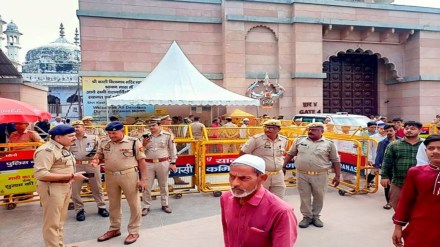In the midst of the ongoing survey of the Gyanvapi complex by the Archaeological Survey of India (ASI), the Hindu side submitted a fresh plea on Wednesday, urging the Supreme Court to issue directions to the ASI regarding the survey of a sealed area within the complex. This area contains a structure claimed to be a ‘Shivling’ inside the mosque.
A bench led by Chief Justice of India DY Chandrachud said that the case can be listed alongside other pleas related to the Gyanvapi dispute. The plea by the Hindu side seeks a scientific investigation of the sealed area, similar to what has been done in the rest of the complex.
Also read:Varanasi court grants 8 more weeks to ASI to complete scientific survey of Gyanvapi mosque complex
The petition calls on the ASI to conduct a scientific inquiry into the ancient ‘Shivling’ and provide a report on its establishment date and whether it functions as a “fountain.”
“It is submitted that the ‘Shivling’ was found in a pond filled with water, surrounded by walls. It is puzzling that Muslims were using the pond for their Wazu purposes, despite knowing that there was a ‘Shivling,’ an object of Hindu worship, in the pond. However, the petitioner and their followers claim that the article is a fountain and not a ‘Shivling’,” the plea states.
Also read:Gyanvapi dispute: Varanasi court directs ASI to hand over items recovered during mosque survey
The ASI has been surveying the premises since August 4, as per a court order. The plaintiffs suggest that since the ASI team is already on-site with the necessary equipment, they can also survey the sealed area.
The term “sealed area” refers to the section within the Gyanvapi premises where a Shivling was claimed to have been discovered. It was sealed following a Supreme Court order in May 2022 to allow Muslims to offer namaz at the mosque.
